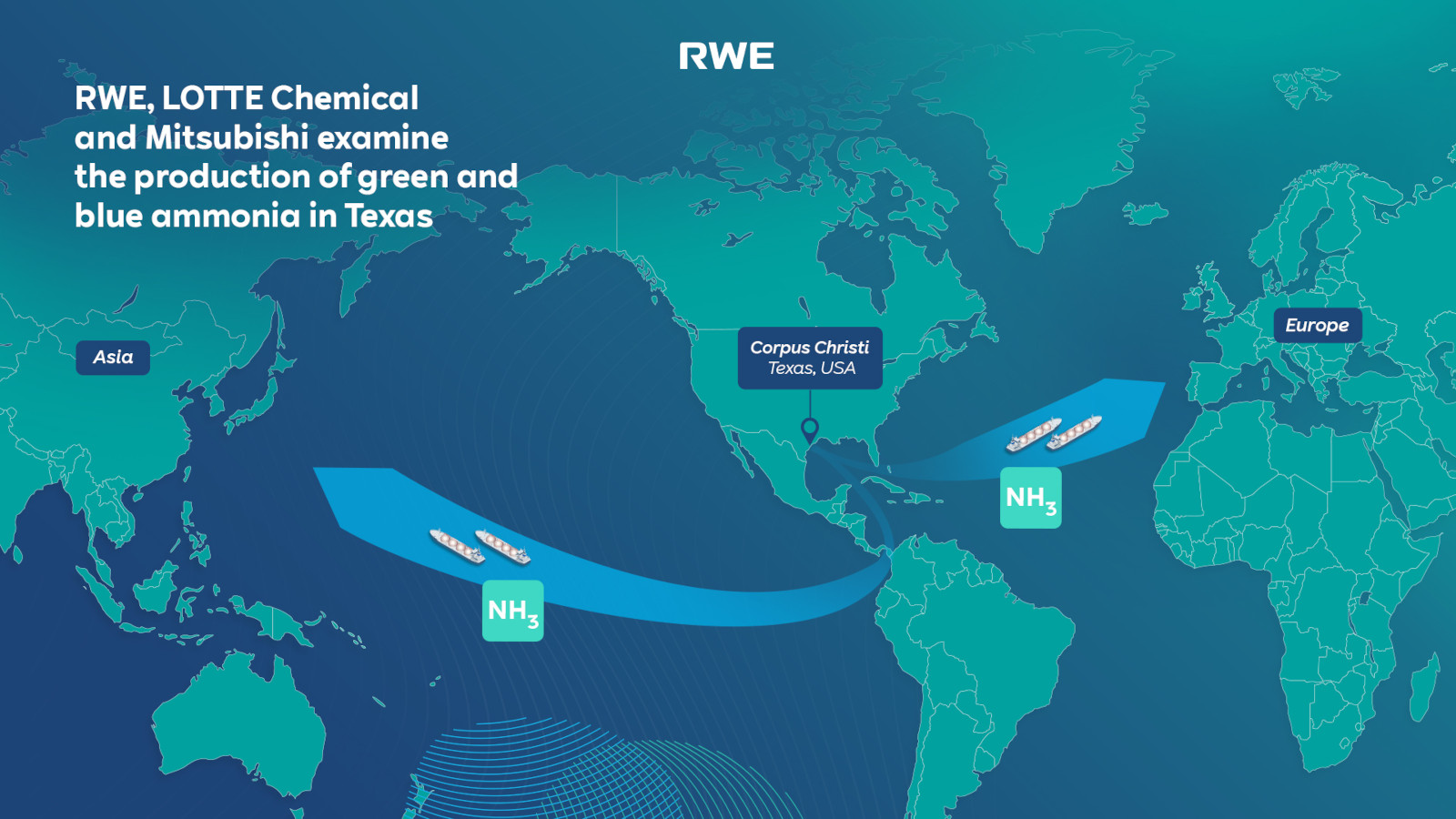RWE and Masdar join forces to develop 3 gigawatts of offshore wind projects off the UK coast
29.02.2024

RWE , LOTTE CHEMICAL Corporation (LOTTE) and Mitsubishi Corporation (MC) have formed a strategic alliance to jointly develop stable and large-scale clean ammonia (green and blue ammonia) supply chains in Asia, Europe and the US.
Within this alliance RWE, LOTTE, and MC have now signed a Joint Study Agreement (JSA) to develop a large-scale integrated clean ammonia production and export project in Port of Corpus Christi, Texas, USA.
Under the JSA, the partners agreed to jointly study the development of a large-scale ammonia facility that integrates green and blue ammonia production and leverages common infrastructure for international exports with a focus on Asia and Europe. The Parties target first production by 2030 and a phased build-out of production capacity with multiple production units. In the final build-out stage the project is envisaged to produce up to 10 million tons of clean ammonia per year. The land required for the project is under discussion with the Port of Corpus Christi Authority. The partners are bringing together complementary expertise to develop the project.
This JSA complements other preliminary efforts to develop large-scale clean ammonia projects including the South Texas region.